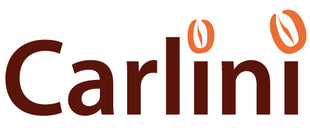The world started to embrace what is known as "3rd Wave" coffee around 2008.
3rd wave was a trendy term created to describe aspects relating to trace-ability and preparation of coffee that showcased the very best that could be developed from the roasting and brewing of the bean.
In other words, it was a more involved life cycle from crop to cup - sourcing high grade specialty green beans, roasting the beans to defined and controlled profiles, typically as Single Origin and then brewing the coffee using any number of methods that best suited the character in the bean and the way it was roasted, e.g. lighter roasts for filter, drip, syphon, etc. and medium roasts for espresso.
3rd wave generally refers to more focused and individual approach to a coffee bean - rather than throwing the beans into a blend and then roasting it dark for espresso.
Truth is, the style of coffee articulated as 3rd wave had been around a lot longer, but in a commercial and general consumer sense, it was not widely marketed as such.
A by-product of 3rd wave coffee has been the explosion in number of small specialty coffee roasters - sometimes working in tiny factories or a little shop roaster sitting in the corner of a cafe to add an authentic, individual emphasis on "locally fresh roasted".
The other side-effect of the 3rd wave growth has been the rise in prominence (and profile) of "artisan" style coffees and coffee roasters. In other words, these small shop roasting facilities are defining themselves as true craftsmen (and craft ladies) of the bean.
Yes, of course, it's simple - just plonk a shiny little roasting machine in the corner, hang up a few signs, wear some funky clothes, tattoos, beards, dreadlocks, loud music and presto you can call yourself a Master Roaster and Artisan because your coffee is "hand roasted" to perfection.
The reality is somewhat different. It is true that Artisan roasters might be able to experiment more because their systems are not controlled or managed to any tight specifications, however, many of these artisan roasters are in fact highly inexperienced and just do not have the "hours" under their belt required to call themselves true artisans or master roasters.
DON'T BE FOOLED BY THE CLAIMS THAT SMALL HAND-ROASTED COFFEE IS BEST.
Hand roasting is prone to errors - it is very difficult to manage consistency and quality as roasting requires a lot of concentration - you simply cannot be distracted - something that occurs so easily when people are watching or asking questions.
Roasting by olfactory senses may provide an interesting theater that attracts those with romantic notions believing that nothing compares to sight, sound and smell, but I'm afraid that if you are relying upon your senses in order to roast the facts are YOUR RUNNING WELL BEHIND in the management of your roast and it is already out of control.
You see, all roasting equipment experiences variable stages of thermal lag. When you start to spot a problem, or deviation, it's too late. By the time you make a correction or adjustment, then it takes considerable time for either heat to build up or to dissipate. It's certainly never instant like cooking on a gas stove in your kitchen. Thermal mass is a big factor in managing roasting profiles.
Many Artisan roasters are using only a basic time and temp log as their guide, however, this is insufficient to adequately manage the roasting of a coffee batch......it just shows what took place.
WHY THERE IS NO SUBSTITUTE FOR TECHNOLOGY WHEN IT COMES TO PRECISION
At Carlini Coffee Company, all 3 of our best in class roasting platforms have fully automated profile systems installed. We have deployed the best available technology to achieve our quality and consistency objectives.
Computers that control the roaster to defined profiles will always perform more reliably and faster than humans. We rarely hand roast anything - in fact it's less than 1% of our volume and it is only undertaken when a customer may have specifically requested a non-standard item or it's new coffee that we are gauging it's suitability. The intelligence built into our coffee roasting profiler uses analytical engines to manage roast batch duration.
To supplement the technology in our commercial roasting plants, we have developed analytical systems that mark and score roasted coffee control samples so the feedback loop is completed back to the original recipe and batch - a true optimization process.

